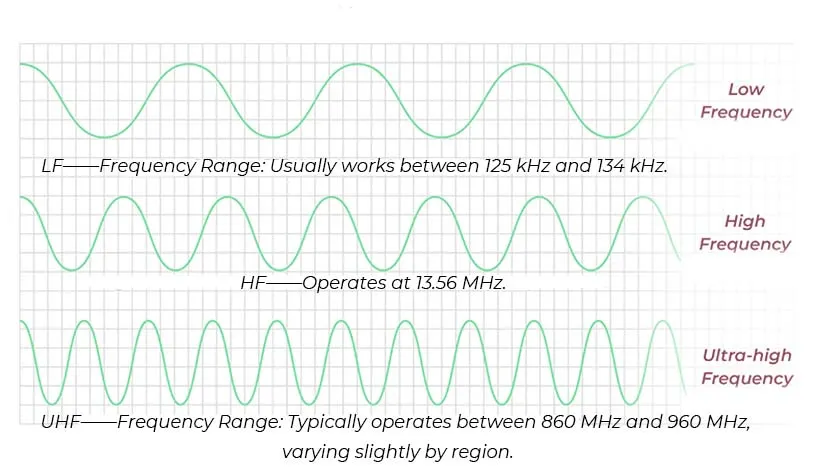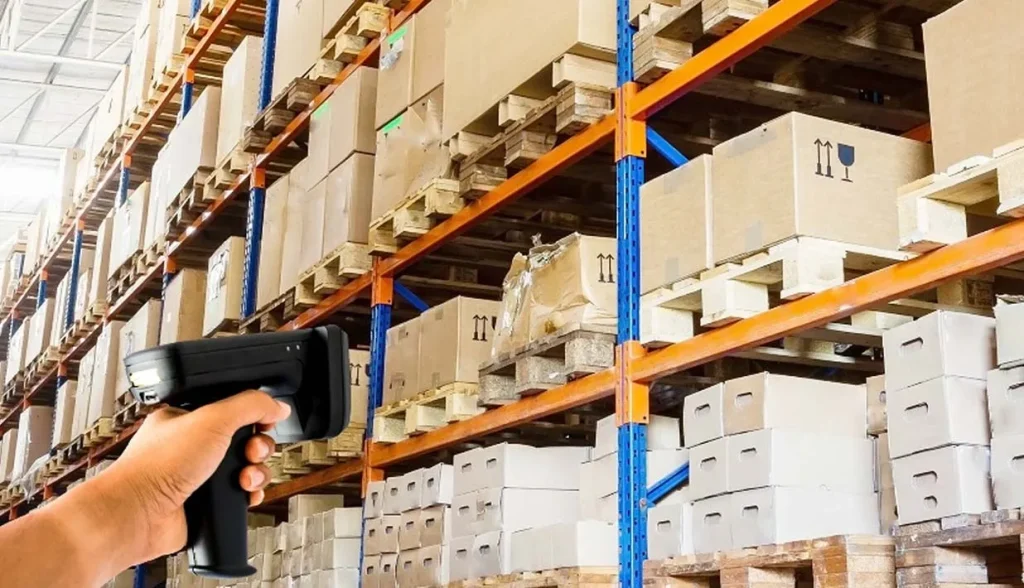The post “The Key Role of RFID in CMMC Certification: Ensuring Compliance and Security” highlights the significant impact of RFID technology in achieving Cybersecurity Maturity Model Certification (CMMC). It emphasizes how RFID enhances compliance by streamlining asset tracking and providing real-time visibility, which is crucial for maintaining security protocols. The article outlines various advantages, including improved inventory management, reduced human error, and increased accountability, making it easier for organizations to meet CMMC requirements. Additionally, it discusses the unique qualities of RFID that contribute to a more secure and efficient compliance process, ultimately reinforcing the importance of adopting this technology in the defense supply chain.
Tag Archives: asset tracking
This post provides a comprehensive overview of RFID (Radio Frequency Identification) frequencies, detailing their distinct characteristics and practical applications. It highlights the advantages of different frequency ranges, such as low, high, and ultra-high frequencies, and how these affect read ranges, data transfer rates, and environmental adaptability. The article also underscores the technological advancements that enhance RFID efficiency and reliability, making it a vital tool in various sectors, including logistics, retail, and healthcare. Overall, it emphasizes RFID’s transformative potential in streamlining operations and improving inventory management.
This post delves into the transformative potential of 13.56MHz RFID tags in laboratory settings, highlighting their efficiency in tracking samples and equipment. It provides a practical guide on implementation, emphasizing benefits such as improved inventory management, enhanced data accuracy, and streamlined workflows. The article distinguishes itself by offering real-world applications, tips for integration, and insights into the technology’s reliability and security features, making it an essential resource for lab professionals aiming to optimize operations.
This post provides an in-depth guide to RFID cable tie tags, exploring their definitions, applications, and benefits. RFID cable tie tags are innovative identification tools that combine the practicality of cable ties with radio frequency identification technology. The article highlights their pivotal features, such as durability and ease of use, making them ideal for inventory management and asset tracking in various industries. Key advantages include improved organization, enhanced efficiency, and reduced labor costs. The guide also discusses unique qualities that set RFID cable tie tags apart, emphasizing their role in streamlining operations and boosting productivity in environments where reliable tagging solutions are essential.
This post explores the innovative use of RFID LED tags to enhance inventory management and logistics efficiency. It highlights how these tags leverage radio-frequency identification technology combined with LED indicators to provide real-time visibility of inventory status. Key advantages discussed include improved tracking accuracy, reduced operational costs, and streamlined workflows. The article emphasizes the distinctive qualities of RFID LED tags, such as their ability to illuminate for quick identification and the integration potential with existing systems, making them a powerful tool for businesses aiming to optimize their supply chain processes.
This post explores how RFID technology is revolutionizing business operations by significantly reducing costs and enhancing sustainability. It highlights key features of RFID, such as real-time tracking and inventory management, which streamline processes and minimize waste. The advantages of implementing RFID include increased efficiency, improved accuracy in stock levels, and reduced labor costs. Additionally, the post emphasizes the technology’s role in promoting sustainable practices by optimizing resources and decreasing environmental impact, making it a crucial tool for forward-thinking companies aiming to balance profit with planet.
Discover the transformative potential of RFID on-metal tags in the latest post, “Unlocking the Power of RFID On-Metal Tags: Benefits and Applications.” This article highlights the unique ability of these tags to operate effectively on metal surfaces, overcoming common challenges faced by traditional RFID solutions. Key advantages include enhanced durability, improved read ranges, and versatile applications across industries such as manufacturing, logistics, and asset tracking. The post emphasizes how these innovative tags can streamline processes and provide real-time data, ultimately leading to increased efficiency and productivity in operations. Explore the future of tracking and inventory management with RFID on-metal tags!
The blog post “Why UHF RFID Tags are Becoming More Popular: 5 Key Reasons” explores the rising popularity of UHF RFID tags, highlighting their pivotal features and advantages. It identifies five key reasons for their growing adoption: enhanced read range, ability to track multiple items simultaneously, efficiency in inventory management, cost-effectiveness as technology advances, and increased automation in various industries. The post underscores how these distinctive qualities make UHF RFID tags an invaluable tool for improving operational efficiency and accuracy in supply chain management, retail, and asset tracking.
UHF RFID tags significantly enhance healthcare equipment management by streamlining tracking and inventory processes. These tags enable real-time monitoring of medical devices, improving efficiency and accuracy in locating equipment. Key advantages include reduced loss of items, better compliance with regulatory standards, and optimized asset utilization. Their robust design withstands sterilization processes, ensuring durability in healthcare environments. By integrating UHF RFID technology, healthcare facilities can enhance patient care, reduce costs, and maintain high operational efficiency, positioning RFID as a vital tool in modern healthcare management.
The post “How RFID Technology Revolutionizes Operations in the Entertainment Industry” explores the transformative impact of RFID (Radio Frequency Identification) technology on entertainment venues and events. It highlights key features such as enhanced inventory management, streamlined access control, and improved audience engagement. RFID enables quicker check-ins, reduces wait times, and facilitates real-time tracking of assets, leading to increased operational efficiency. The advantages of adopting RFID include cost savings, better security, and the creation of personalized experiences for attendees. Overall, the article underscores how RFID is reshaping the entertainment landscape, making it more innovative, efficient, and customer-focused.
- 1
- 2










